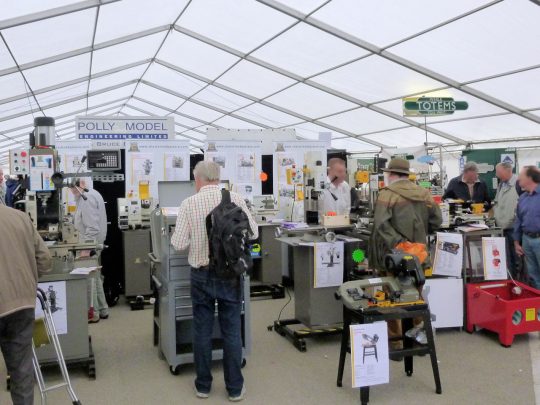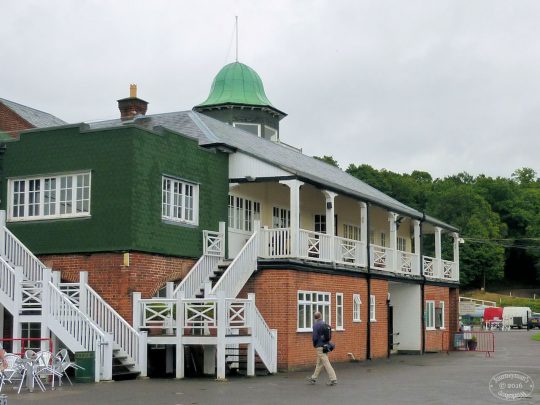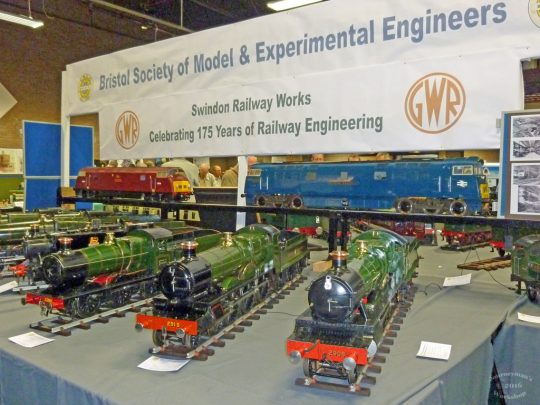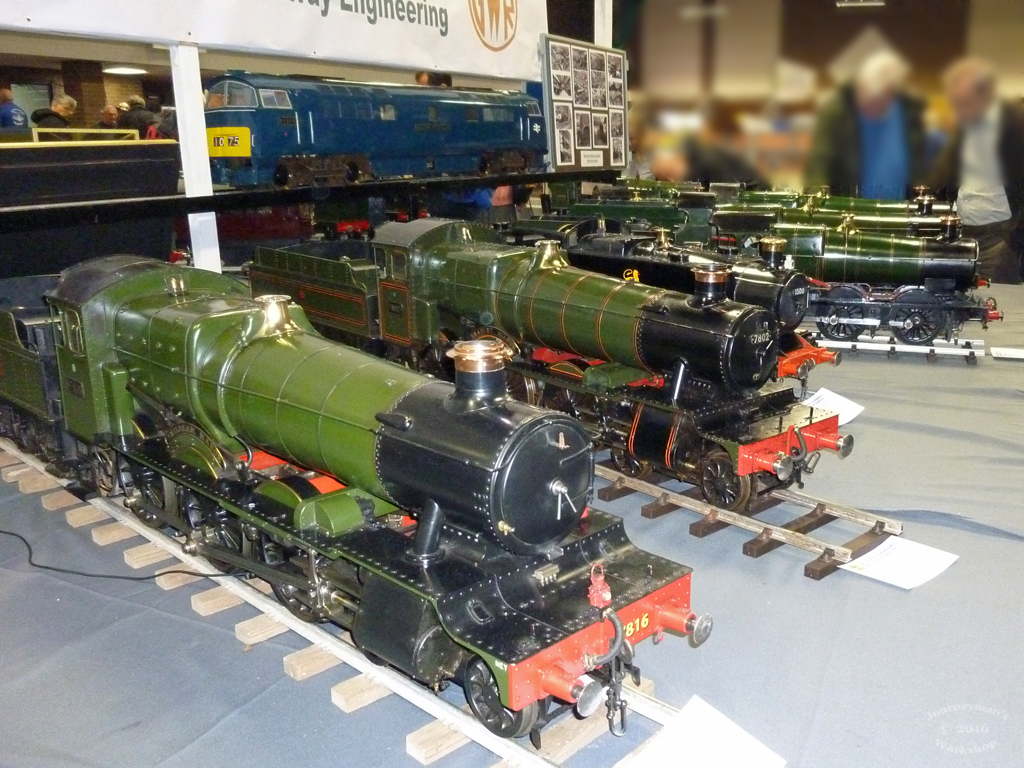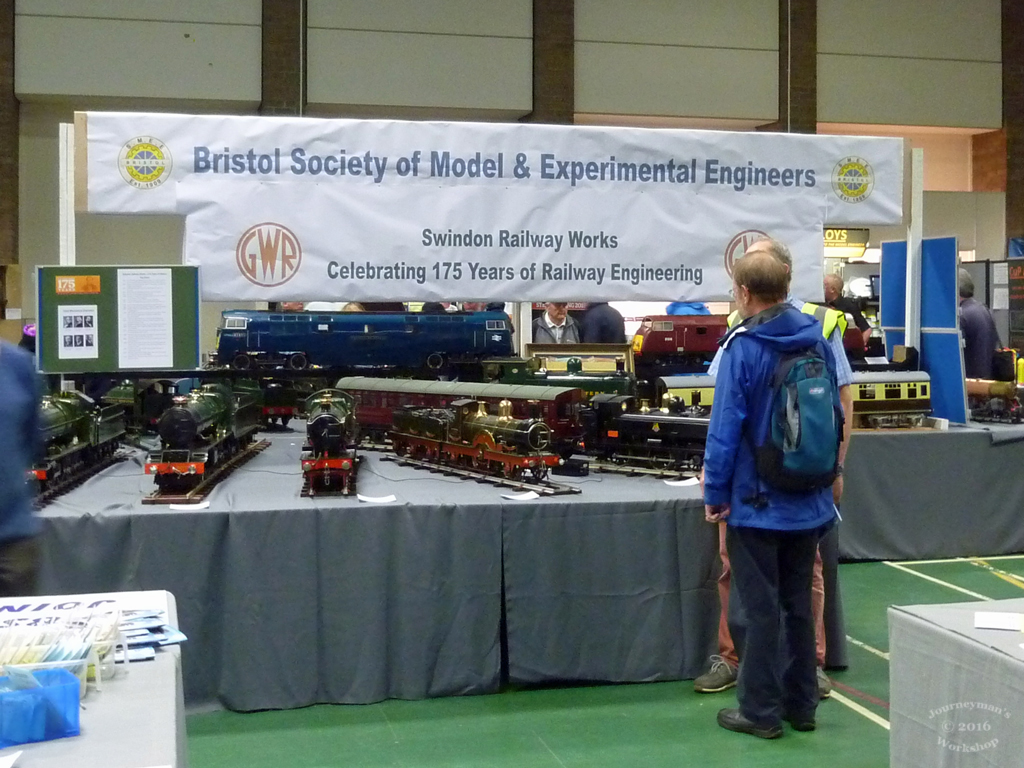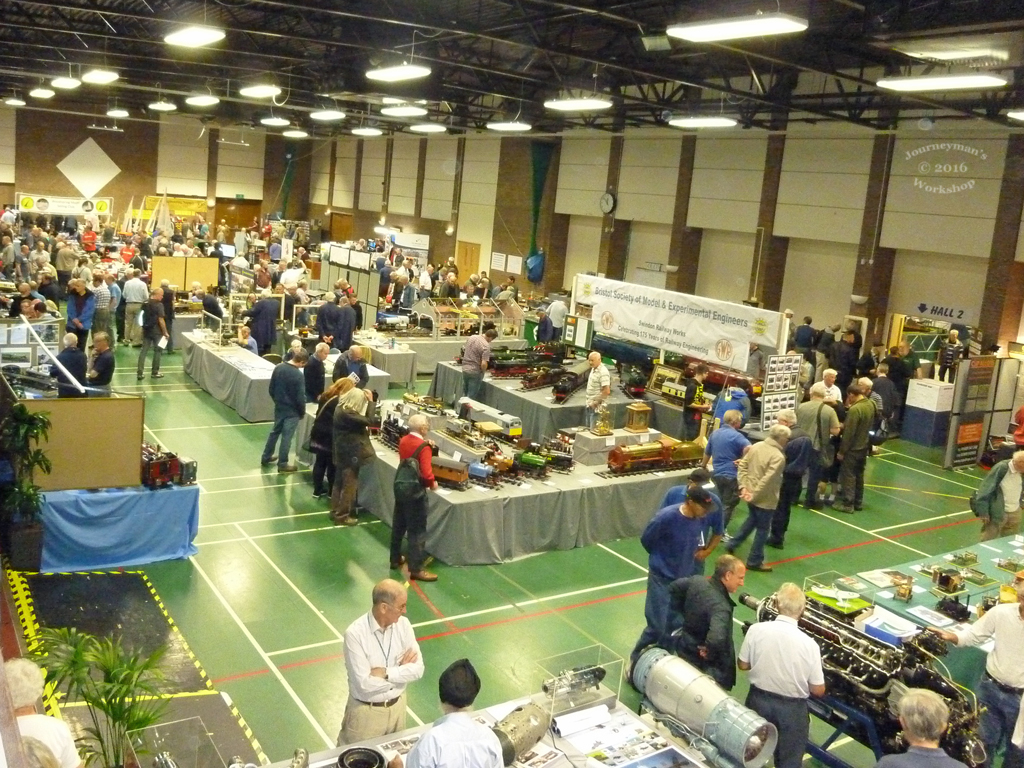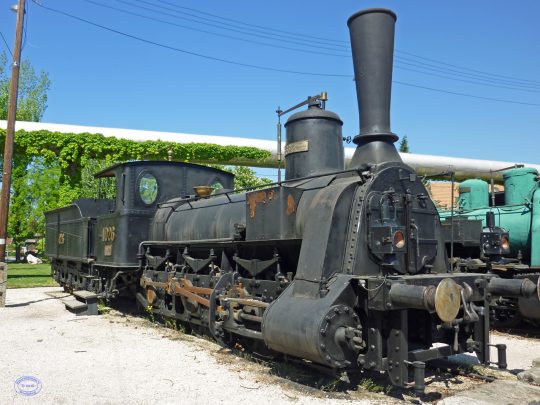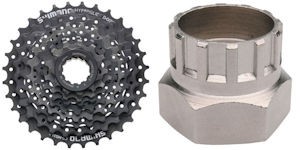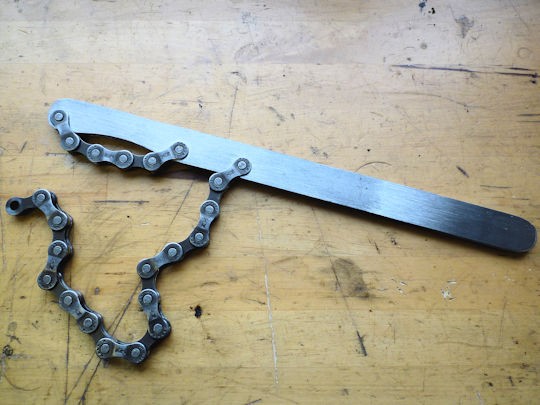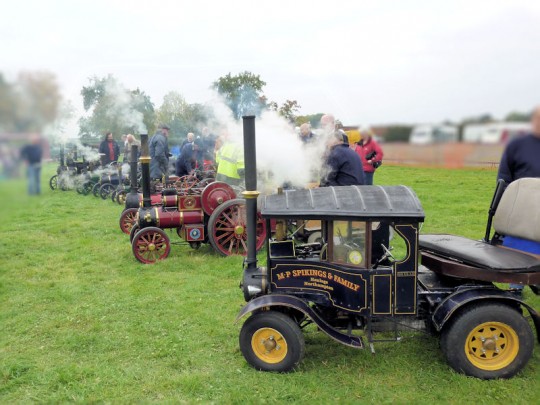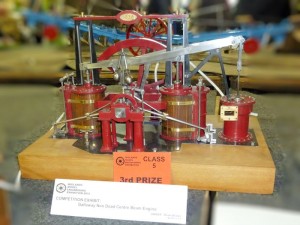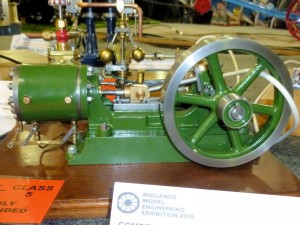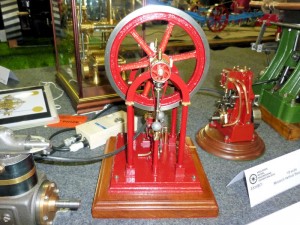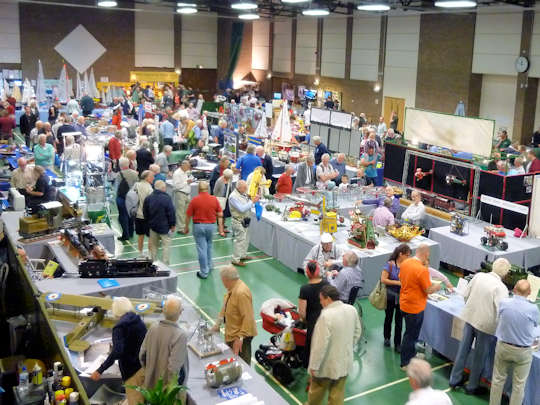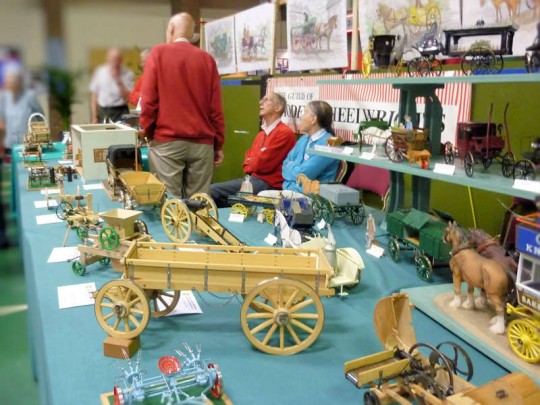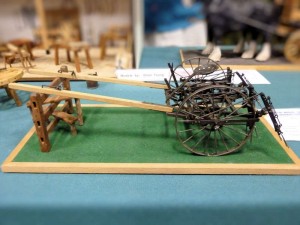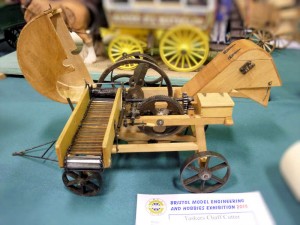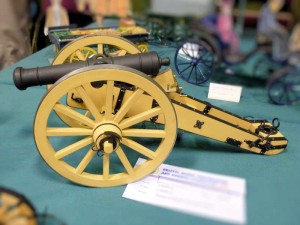The Model Engineer Exhibition moved to Brooklands Museum in Surrey this year after a short break. Set inside part of the old Brooklands motor racing circuit, the Museum celebrates the motor racing and aviation history of the area. Brooklands Circuit was the world’s first purpose-built motor racing circuit, built by local landowner Hugh Locke King in 1906. The circuit is 2¾ miles long with steeply banked curves and an extra ½ mile start / finish straight in front of the clubhouse. Much of the original concrete circuit remains but you wouldn′t want to race on it now, the surface is very rough and I doubt it was exactly smooth when it was new. (Click On An Image For A Larger View)

With both the museum exhibits and the exhibition there was plenty to see. The competition and loan models together with the club stands were based in the museum whilst the trade stands were in a large marquee. On-site catering was good and there was plenty of seating both in the restaurant and close to the models. There was also plenty of outside seating available once it stopped raining and dried out.
The traders area was well supported but some of the “usual” suppliers were noticeable by their absence. A view inside the marquee (2) showing Chester Tools stand, quite a bit smaller display than I have seen before. With the increase in on-line sales and increasing costs of attending a show I think this will become the norm for future exhibitions. I had a quick look round but my wallet stayed resolutely in my pocket. Off to the model displays which were based in and around the clubhouse (3), built around 1907 it houses the members billiards room, the clerk of the course office, and you could find similar buildings on most horse racing courses of the period.
Continue reading “Brooklands MEX 2016”